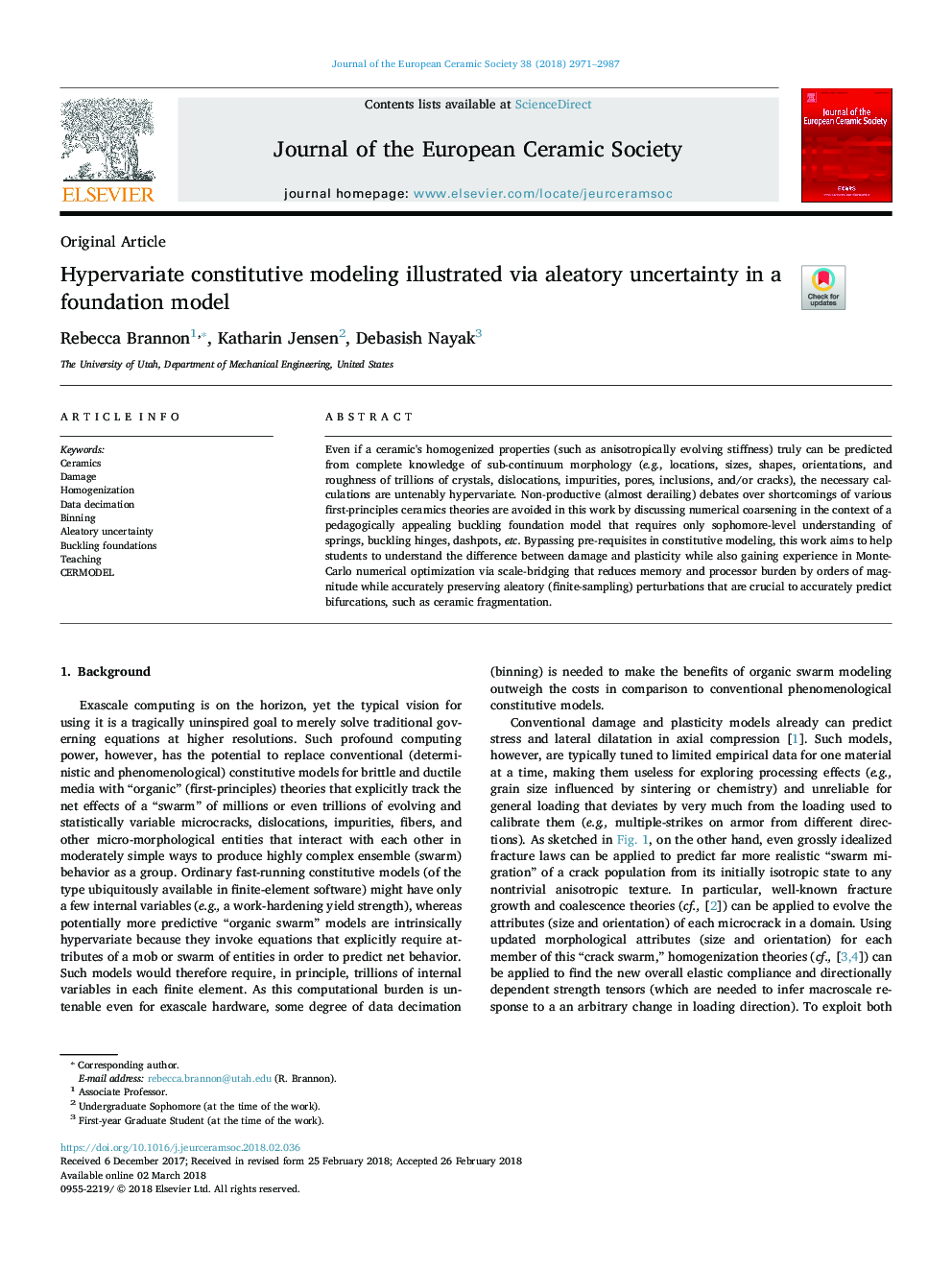| Article ID | Journal | Published Year | Pages | File Type |
|---|---|---|---|---|
| 7898220 | Journal of the European Ceramic Society | 2018 | 17 Pages |
Abstract
Even if a ceramic's homogenized properties (such as anisotropically evolving stiffness) truly can be predicted from complete knowledge of sub-continuum morphology (e.g., locations, sizes, shapes, orientations, and roughness of trillions of crystals, dislocations, impurities, pores, inclusions, and/or cracks), the necessary calculations are untenably hypervariate. Non-productive (almost derailing) debates over shortcomings of various first-principles ceramics theories are avoided in this work by discussing numerical coarsening in the context of a pedagogically appealing buckling foundation model that requires only sophomore-level understanding of springs, buckling hinges, dashpots, etc. Bypassing pre-requisites in constitutive modeling, this work aims to help students to understand the difference between damage and plasticity while also gaining experience in Monte-Carlo numerical optimization via scale-bridging that reduces memory and processor burden by orders of magnitude while accurately preserving aleatory (finite-sampling) perturbations that are crucial to accurately predict bifurcations, such as ceramic fragmentation.
Related Topics
Physical Sciences and Engineering
Materials Science
Ceramics and Composites
Authors
Rebecca Brannon, Katharin Jensen, Debasish Nayak,
